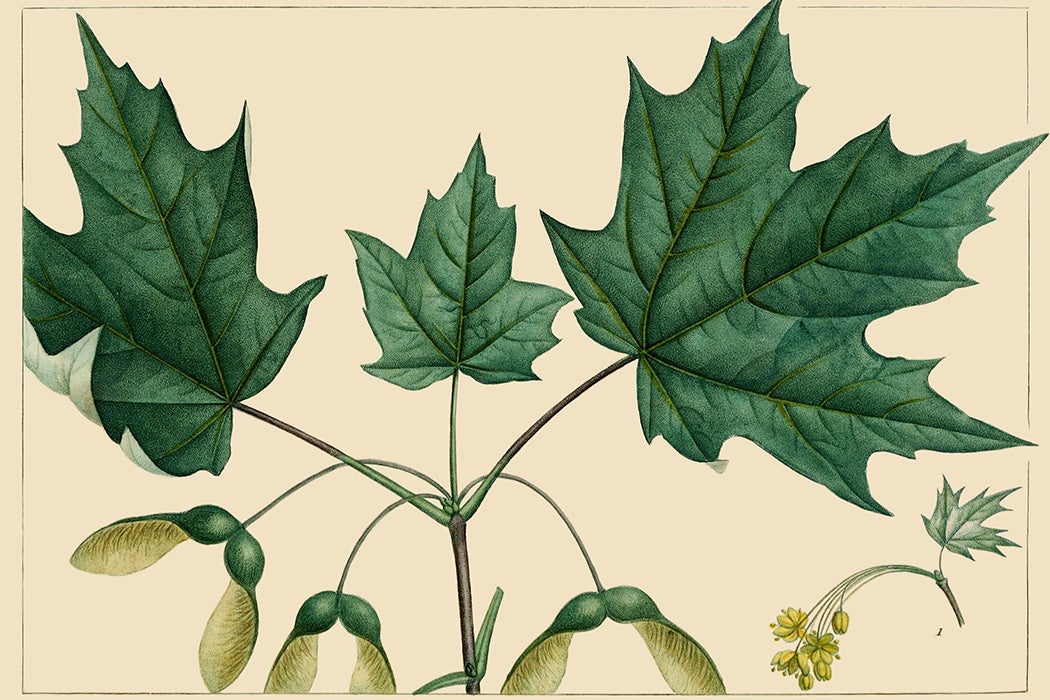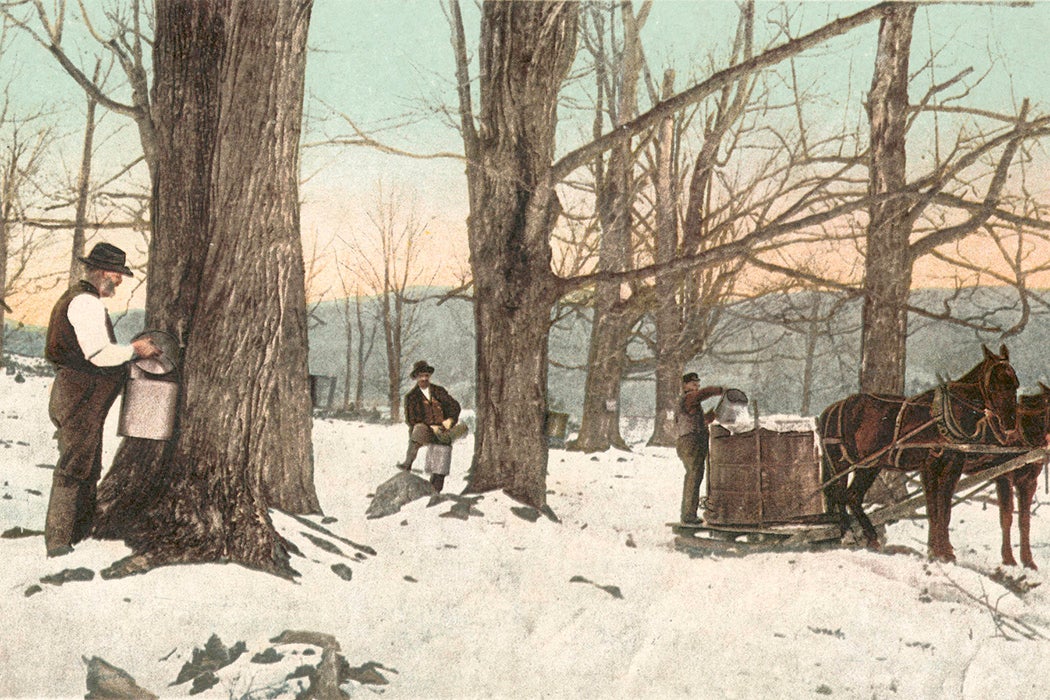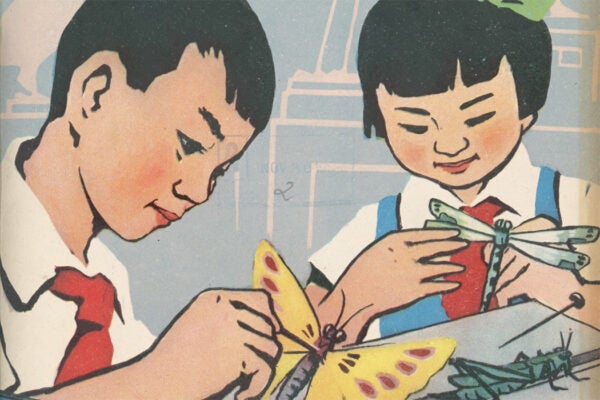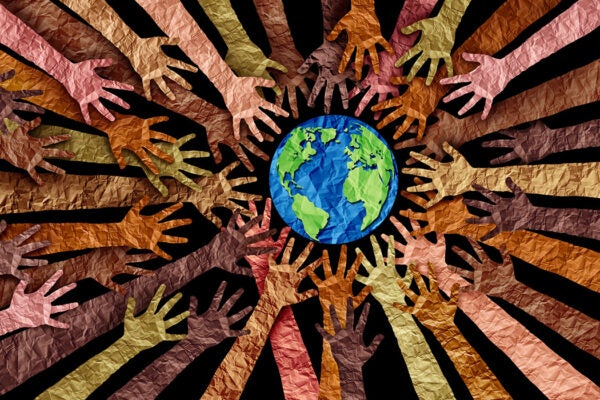Maple syrup producers rejoice in the arrival of above-freezing days and below-freezing nights. The freeze-thaw cycle creates pressure in their tapped sugar maple trees, driving sap through spiles and into suspended buckets or tubing systems. Historically, this process began in late February or early March across the “Maple Belt,” which extends from the midwestern United States to New England and from southern Manitoba to Canada’s Maritime provinces. Some maple-producing locales, such as New Hampshire and Massachusetts, have even designated March “Maple Month” to honor the occasion. However, in recent years, sap runs have become far less predictable.
Last year, the warmest winter on record in the United States and Canada prompted many sugarmakers to tap their trees weeks, even months ahead of schedule. Maple producers typically collect sap for four to six weeks until temperatures rise, leaf buds emerge, and the produce takes on an unpleasant, bitter taste. But increasingly warm winters are ushering in earlier and shorter syrup seasons. Sugarmakers are losing trees to more frequent and severe weather events. Higher temperatures are facilitating the range expansion of sugar maple pests and pathogens.
Climate change is threatening the maple industry—and with it, centuries of tradition rooted in an Indigenous agricultural practice.
Tapping into Tradition
Native to northeastern North America, the sugar maple is a deciduous hardwood tree that, when healthy, can grow more than 100 feet tall and live for 300 to 400 years. The species has furrowed, gray bark and five-lobed leaves that turn brilliant shades of red and orange in autumn. Drooping clusters of yellow-green flowers hang from the tree’s branches in spring, and winged sugar maple seeds spiral to the ground in fall. The species’ scientific name, Acer saccharum, is Latin for “sharp sugar.” “Sharp” refers to the tree’s pointed leaf shape, and “sugar” is a nod to its sucrose-laden sap.
The Indigenous peoples of North America have harvested sap from sugar maple trees for hundreds, if not thousands, of years. Black, red, and silver maples can be tapped for syrup, but sugar maples are prized for their production of the sweetest sap. Although the precise origins of maple sugaring are unclear, legends of its emergence are widespread.
According to an Abenaki oral tradition, the sap of sugar maple trees used to flow as thick and sweet as honey year-round. One day, Gluskabe, a kind yet mischievous trickster, visited a village on behalf of the Creator. He found the village empty and untended, its inhabitants resting on the forest floor with bellies full of maple sap. To encourage the people to work together and appreciate all the other joys of the forest, Gluskabe and the Creator diluted the sap and shortened the sugaring season.
“From that day forward, the people could only harvest sap for a few weeks each year,” writes Alexander Cotnoir, a citizen of the Nulhegan Band of the Coosuk Abenaki Nation. “And so it is still to this day; each spring the flow of maple sap reminds the Abenaki people of Gluskabe’s lesson in honoring all of Creator’s gifts and the importance of building a sense of community by working together.”
Another oft-told tale, popularized in the late nineteenth century by Vermont farmer and novelist Rowland E. Robinson, features Woksis—sometimes styled as an Iroquois chief, sometimes an Algonquin chief—who pierced the bark of a maple tree with his axe. Sap dripped from the gash into a vessel near the base of the trunk, and in the morning, Woksis’s wife used the liquid to boil meat for dinner. Their feast marked the first of many imbued with the delectable sweetness of maple.
More to Explore
Praising Maple Sugar in the Early American Republic
As early as the sixteenth century, accounts of European explorers mention Indigenous peoples carving V-shaped incisions and tap holes in the trunks of sugar maples. They used birchbark vessels to capture the flowing sap and left the harvest to freeze overnight. Water in the sap would separate from the sugar, forming a thick layer of ice on the surface.
“They made the frost, in some measure, supply the place of fire, in making sugar,” wrote Colonel James Smith, who lived with the Kanien’kehá:ka (Mohawk) people from 1755 to 1759 after his capture in the French and Indian War. “I asked them if they were not throwing away the sugar? They said no; it was water they were casting away, sugar did not freeze, and there was scarcely any in that ice.”
After removing the ice, the earliest sugarmakers would bring their concentrated sap to a boil in clay pots over flames or hot coals. They warmed and stirred the liquid until it crystallized into maple sugar, which was preferable to syrup for its easier storage and longer shelf life. The granulated sugar provided valuable nourishment in winter, especially when game was scarce. It was also used to season foods, mixed into drinks, combined with medicines, and given as a gift.
Growth of an Industry
Maple sugaring rose in popularity among European settlers throughout the eighteenth and nineteenth centuries. Colonists adopted the Indigenous practice, replacing wooden and clay sugaring instruments with metal taps, buckets, storage vessels, and kettles. As the United States secured its independence, maple sugar was praised as a cheaper, more ethical alternative to cane sugar produced by the labor of enslaved workers in Britain’s island colonies.
“Patriots hoped to make America self-sufficient and had no desire to aid the commerce of the British Empire, which controlled the cane product and its transport,” explains historian Roy L. Butterfield.
Founding Father and abolitionist Benjamin Rush was a particularly vocal proponent of the use of maple sugar. In a 1791 letter to Thomas Jefferson, he confessed that he couldn’t “help contemplating a sugar maple tree with a species of affection and even veneration,” for he had “persuaded” himself “to behold in it the happy means of rendering the commerce and slavery of our African brethren in the sugar Islands as unnecessary as it has always been inhuman and unjust.”
The excitement about maple sugar subsided, however, after the Louisiana Purchase enabled the production of cane sugar on American soil. The exploitation of enslaved laborers on cane plantations increased supply and decreased production costs. By the time the McKinley Tariff Act removed the import tax on cane sugar in 1890, maple sugar had been outsold. Instead, syrup became the principal maple product.
It takes forty gallons of maple sap to produce one gallon of syrup. This, coupled with the laborious process of trudging through woods and tending tapped trees, restricted maple syrup production to small, family-run operations.
“The technology just wasn’t there to process it efficiently,” says Aaron Wightman, New York’s statewide maple specialist and co-director of the Cornell Maple Program, in an interview with journalist Ashley Stimpson. “Until the 1990s, if you were tapping a couple thousand trees, that was considered huge.”
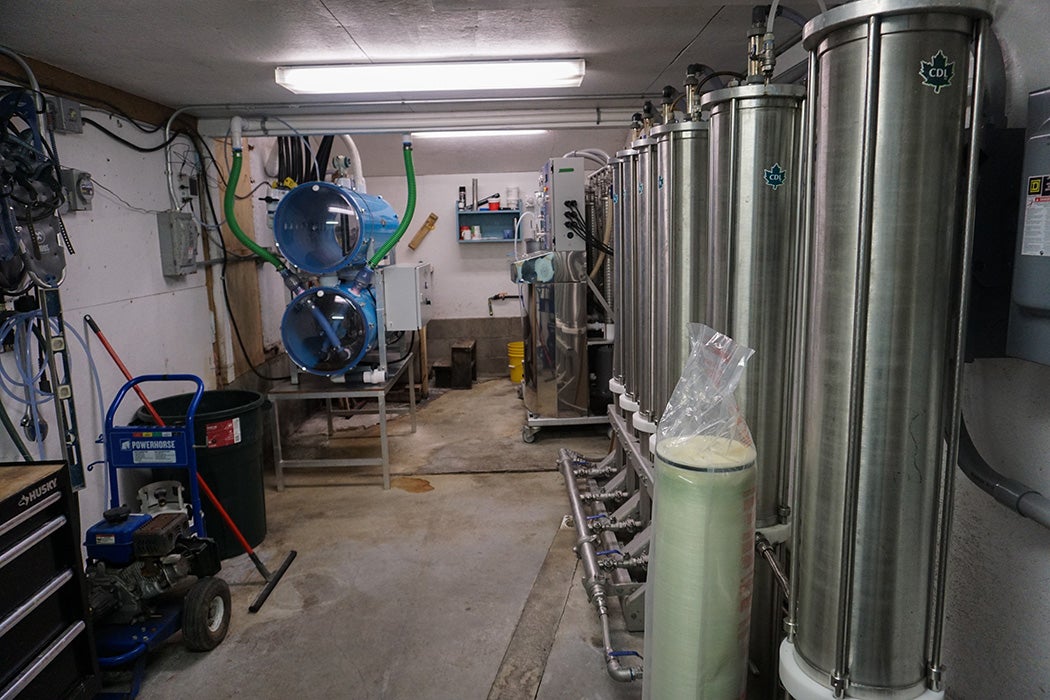
Everything changed in the late twentieth century. The introduction of reverse-osmosis machines allowed producers to remove up to 90 percent of the water from maple sap before boiling. Reverse osmosis is traditionally used to remove contaminants from water by pushing it through a semi-permeable membrane under pressure. When maple sap is put through this process, however, the “contaminants” are the desired product; sugar and minerals form a concentrated sap that can be boiled into syrup in a fraction of the time it takes to boil sap directly from the tree. Most sugarmakers have also traded in their buckets for vacuum tubing systems and their wood-fired evaporators for high-efficiency commercial boilers that run on propane and fuel oil.
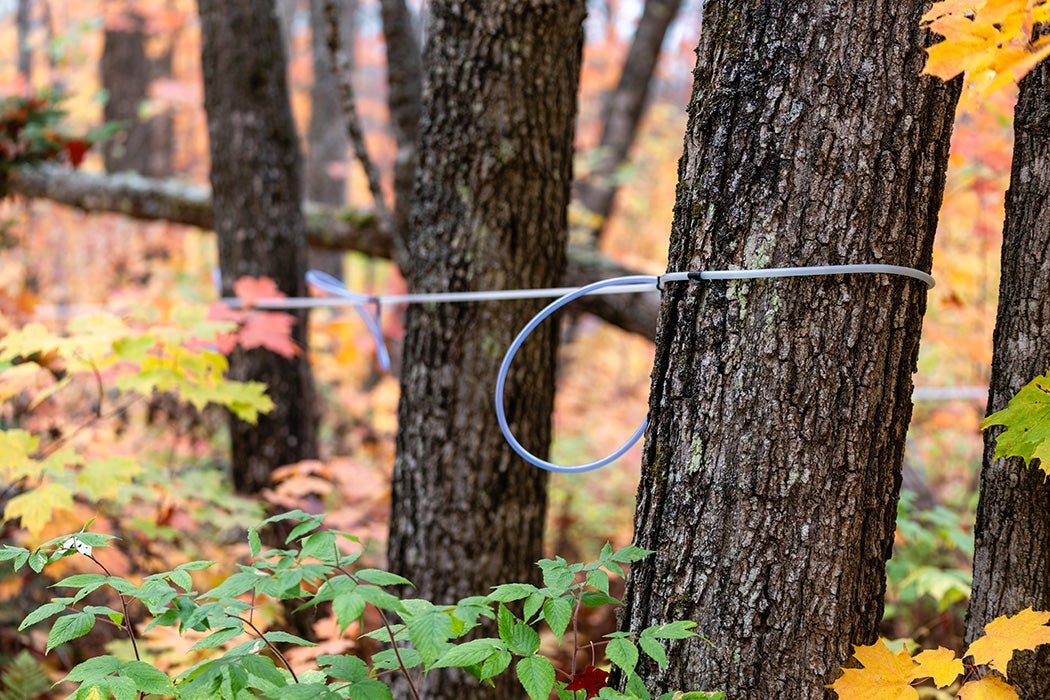
These technological advances have resulted in a maple industry boom, increasing sap yield and syrup output for producers. Over the past three decades, maple syrup production in the United States and Canada has increased by almost 450 percent.
Maple Sugaring in a Warming World
The maple industry continues to grow, but experts are uncertain about its future.
“The last few sugaring seasons have been unpredictable for producers in New England, a reminder that all the modern equipment in the world is no match for the whims of nature,” writes Stimpson.
A difference of just a couple degrees can determine whether sap runs. Vermont, which leads the United States in maple syrup production, has warmed by 4°F in winter and 2°F in summer since the 1960s. A recent survey found that 89 percent of maple syrup producers in the nation have experienced the negative impacts of climate on their production season, and warmer weather is the most prevalent factor. More than half of the respondents reported syrup seasons starting and ending earlier each year. Higher temperatures may also reduce the sugar content of maple sap, meaning producers will need to collect and boil more sap to produce the same quantities of syrup. Ultimately, the ideal conditions for maple sap flow are expected to shift northward by roughly 250 miles by 2100.
Sugar maples are known for their hardiness; they can heal tap holes in as little as one growing season. However, they may not be able to maintain this resilience under climate change. During the freeze-thaw cycle, sugar maples rely on a deep blanket of snow to insulate their roots and prevent freezing. In a warming world, receding snowpack is expected to slow maple growth and cause root damage. The trees are also increasingly damaged by high winds, late frost, and sudden, extreme warming episodes. Many Canadian producers lost more than a third of their tapped trees during windstorms in 2022. Furthermore, sugar maple pests and pathogens, such as the Asian longhorned beetle, are projected to infiltrate colder regions as temperatures rise.
Weekly Newsletter
The list of threats to sugar maple trees is formidable, but researchers, conservationists, and sugarmakers haven’t lost hope. They’re actively working to boost the resilience of forests managed for maple syrup production, otherwise known as “sugarbushes.” For example, Audubon societies in Vermont, Massachusetts, New York, and Maine encourage sugarmakers to diversify their maple farms through the Bird-friendly Maple Project. The program supports maple producers whose sugarbush contains at least 25 percent non-maple trees, which bolsters the diversity and abundance of bird species while reducing the forest’s susceptibility to climate-related challenges.
From the very first sap harvest to syrup production on an industrial scale, sugar maples have witnessed centuries of transition. The trees hold meaning for multiple communities, from Indigenous sugarmakers to climatologists. Whether the species endures the storm of climate change will come down to the efforts of these stakeholders and to climate mitigation more broadly. Collaboration will be key to safeguarding the future of sugar maples and their deep historical roots. The Dumbarton Oaks Plant Humanities Initiative seeks to honor these histories, placing the stories of plants within the context of human life.
Support JSTOR Daily! Join our membership program on Patreon today.
